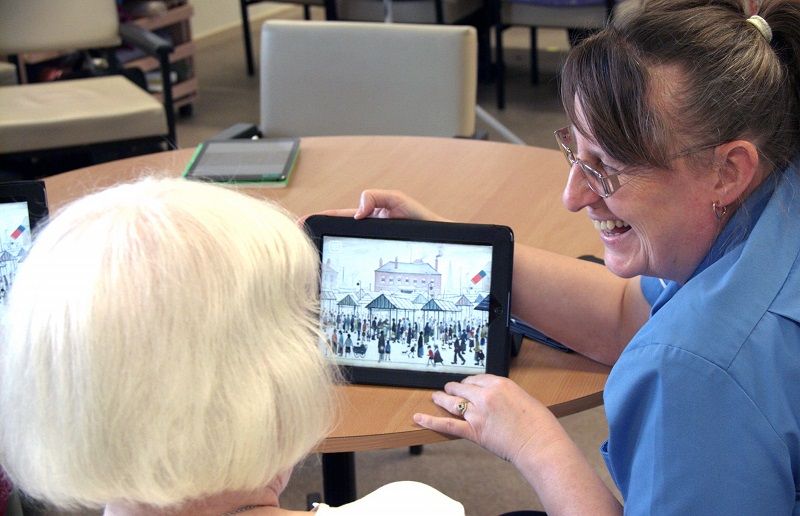For over ten years the Baring Foundation has funded creative activity of all kinds in care homes as part of our Arts and Older People programme which ran from 2010- 2019. As a follow-up to this work, we recently published a report called Every Care Home A Creative Home that made the case for a systems approach to arts in care homes and in particular greater attention by the Care Quality Commission (CQC) as the regulator. We hope to take this work forward next year and we continue to fund the National Arts in Care Homes Day with the Rayne Foundation.
In writing that report it struck me that too little attention is given to the benefits of creative activities in care homes to staff.

Perhaps it is something that deserves some research attention. There is some research on the benefits to residents, as well as a single study about the importance of a good relationship between care workers and artists coming into care homes. I doubt that it is possible to be really sure about the impact of arts in care homes on issues like staff retention and absences. It seems to me that care homes that have good arts provision tend to be good care homes in general (as indicated by informal research by Music for Dementia which finds a correlation between care homes which achieve Outstanding in CQC inspections with the provision of music and singing). You would expect staff to be generally more satisfied in such care homes. However, more direct research about the views of staff about creativity in care homes and its impact on them is certainly possible.
But in advance of any research, here are some thoughts of mine.
Staff have a right to be creative and to access culture. The central argument about all creativity for the Baring Foundation, beyond the undoubted ancillary benefits, is that it is a right that we all have and of course that is equally true for staff as well as residents. We all know that care staff are both poorly paid in comparison to their skills and very busy, so they also may have less time and money to enjoy the arts outside of work.
What’s good for residents has benefits for staff. There is evidence that creative activity can reduce the amount of medication that some people are prescribed in old age and can also reduce agitation. This makes life better for residents but also make the tasks that care staff are undertaking easier.
Mental and physical health benefits of creativity. We tend to concentrate on the impact of the arts on residents, for instance improved morale and mobility. But, of course, this also true for staff who are taking part in activities. The last few years have been hard beyond description for care staff and the arts are needed more than ever for everyone’s wellbeing.
Acquiring new skills or using old ones. Some care staff may already be musically or artistically talented in their own right. But by joining in a painting class or a music making session, a member of staff can develop new skills and perhaps new passions. Many professional arts organisations working in care homes train staff in creative technique as part of their work to deliberately transfer skills and make activities more sustainable.
Deeper relationships with residents. Care staff see new aspects to residents through the arts. Their choice of music, say, can be a conversation starter about their interests. A creative talent can show someone in a new light.
Improved atmosphere in a care home. This can be hard to pinpoint but it affects everyone. Bringing in professional artists into a care home means new faces and new relationships. Staff working with each other and with residents creatively can improve teamwork and camaraderie. Beautiful works of arts on the wall or the sound of singing will show that management care about the environment for everyone in a home.
And let’s not underestimate the pleasure and fun that we can all take in the arts.
